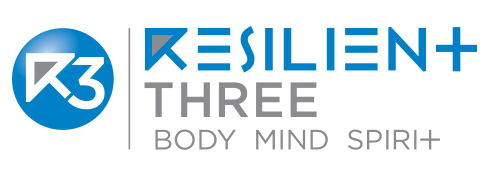
Breathing - under utilised skill
Life begins with and ends with the breath. Funny, really, how in the middle part very little attention (if any) is paid to this vital process. Most people simply inhale and exhale. Fair enough. Equally,most people are surprised when I educate them on the virtues of breathing with a bit of awareness. Knowledge and practice can truly turn this indifferent act into a source of health and athletic performance.
Why - Generally people breathe very badly. Most of the time we tend to under utilise our lungs and restrict the breathing to the upper part of the lungs only, which leads to gradual tightening of the Diaphragm muscle and chronic fight or flight response as the the shallow breathing is associated with elevated cortisol and adrenalin (stress hormones) levels. This will further give rise to profound tightness in the neck and shoulder muscles and may even lead to tension type headaches, various gut problems, and hormonal imbalances.
I am not blaming all of our ailments on faulty breathing technique, but I can confidently say that working on your breathing is beneficial for your health and wellbeing.
What - Paying attention to your breathing pattern is beneficial for many reasons and chances are that you will find it relatively easy. Usually the benefits start to manifest rapidly and the satisfaction of exerting your conscious control over your bodily processes can be quite addictive.
There are a couple of better options than the typical shallow breath. In Yoga they emphasise a very deep, Diaphragmatic breath (or belly breath) that is meant to utilize the full lung volume with each breath. The idea is sound and it’s great for relaxation as you tend to secrete a lot of endorphins in the process. This skill takes a while to master but it can be a great tool in the box. The Costal breath focuses more on breathing into the lower ribs. This method allows greater control, as the core muscles remain active in the process and the lung volume utilised is probably equal to that of the diaphragmatic breath. The upside of costal breathing is hormonal, due to less endorphins this method is better suited for times when you are active or exercising.
I would like to draw your attention to another anatomical feature that we all possess. The nose. Nasal breathing is by far more advantageous than mouth breathing. By breathing through the nose only (inhale and exhale) you gain mechanical and chemical advantages. As you inhale through the nose the air tends to find its way down to the bottom of the lungs first, activating the ribs and the diaphragm. This reduces the mechanical stress on the muscles around the shoulders and the neck, leading to reduced muscle workload there. The main advantage, however, is chemical in nature. By breathing through the nose only you initially restrict you airway (most of us are habitual mouth breathers) and create mild air hunger. This leads you to improve your C02 tolerance. The mild suffocating feeling is the build up a carbon dioxide in your system and that is good thing. See, you need it to release the oxygen from the haemoglobin in your blood. By exhaling all of the C02 through the mouth the oxygen will remain bound in the haemoglobin and you will not access this vast amount of energy available to you. The second major chemical benefit is Nitric Oxide which is released from your nasal tissues. N02 is a potent vasodilator and smooth muscle relaxant and it works to help you dilate the bronchial tree, the lungs, the blood vessels and even the guts. You get no N02 from mouth breathing. Third advantage is the air conditioning system in the nasal passage that filters, humidifies and adjusts the air temperature to best suit your lungs.
As your breathing pattern changes over time to become more nasal dominant this can even help reduce snoring and sleep apnoea, resulting in better quality sleep and recovery. Imagine that - no more sore ribs after repeatedly waking your partner!
The health benefits of breathing more consciously are staggering and in the next article I will go into the athletic performance enhancement side of things in more detail, but for now, suffice it to say, that you ought be paying attention to your breathing from now on.
How - To learn nasal breathing (whether it is costal or diaphragmatic) is quite simple. Keep your mouth shut. At first you need to get comfortable with the idea of not opening your mouth to breathe, and this can take a while. Try and pay attention to your breathing when you are alone and not needing to speak or eat. If you are working alone or going out for a walk are perfect opportunities to exert control over your breathing. At first you may feel weird. Just roll with it. You will not cause any damage to yourself by restricting your breathing a little. Relax and keep those lips sealed. After a while you can consciously try and and breathe into different parts of your lungs. Try and breathe all the way to the bottom and pushing out your belly on the inhalation. Try and breathe in to the middle of the lungs by flaring out your ribs (place your hands on the ribs on either side to give yourself some feedback) and keep your tummy muscles active throughout.
This process becomes rapidly easier with practice. Try and insert a few episodes of breath control each day and soon you will find that it is becoming more and more automatic as your breathing reverts to factory settings. Human babies breathe through their noses. All animals breathe through their noses unless they are panting to reduce body heat after exercise. It is the favored and nature intended breathing method.
Take Home Message - Keep your mouth shut. You have a nose for a reason.
